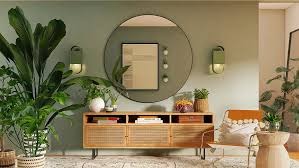Embarking on the journey of creating a living space that reflects personal style and functionality can be an exhilarating experience. When it comes to new home interior design, the vast realm of possibilities often requires a guided approach to achieve a cohesive and satisfying outcome. Whether you are moving into a new property or revamping an existing one, these tips are designed to help homeowners curate interiors that are both aesthetically pleasing and inherently practical.
Understanding the Role of Functionality
Foremost in interior design is the principle of functionality. An attractive space that fails to meet the inhabitant’s needs serves little purpose. It’s essential to reflect on how each room will be used and by whom. Considerations such as the flow of traffic, storage requirements, and the activities that will take place in the space can significantly influence design choices.
Establish zones within the home that cater to different functions – relaxing, dining, working, or entertaining. Subtle delineations, whether through furniture arrangement or structural additions, can help demarcate these areas without compromising the overall design aesthetic.
Integrating Personal Style
A new home is akin to a blank canvas, offering the chance to imprint it with one’s unique style. Choosing a design theme that resonates will lend a sense of harmony and personalisation. Whether you favour minimalism’s clean lines, traditional design’s comfort, or the eclectic mix of bohemian aesthetics, ensure that the chosen style mirrors your personal preferences and lifestyle.
Avoid being overly swayed by fleeting trends that may not withstand the test of time. Instead, consider classic elements that can be subtly updated with trend-driven accessories or accents for a more enduring interior design.
Colour Palettes and Lighting
Colour has the power to transform a space, affecting mood and spatial perceptions. Select a colour scheme that complements the natural light available and enhances the desired atmosphere. A harmonious palette serves as a foundation, on which layers of contrasting or accent hues can be added for visual interest.
Lighting equally plays a pivotal role in interior design. A combination of ambient, task, and accent illumination will cater to varying needs and time of day, adding depth and warmth to your interior. Consider innovative lighting solutions that allow for adjustability and can be tailored to create the desired ambience.
Investing in Quality Pieces
When it comes to furnishings, opt for those that marry form and function. Pieces that are both beautiful and built to last will stand the test of time, offering sustainability and durability. Investment in quality over quantity will not only elevate the look of your home but also prove economically sound in the long term, as frequent replacements are less likely.
Thoughtfully select pieces that speak to you, making sure they are of the right scale for your space. Oversized furniture can overwhelm a room, while pieces that are too small may seem out of place or insufficient.
Maximising Natural Elements
Incorporating natural elements into a new home interior design can instil a calming and earthy quality to your space. Material choices such as wood, stone, rattan, and linen add texture and a sense of the outdoors. Embrace natural light wherever possible, and consider indoor plants to enhance air quality and offer a touch of greenery.
Access to views of nature or well-curated outdoor spaces should be maximised to promote indoor-outdoor living, further blurring the lines between the built environment and the natural world.
Personalising with Accessories
Accessories provide the finishing touches that truly personalise a space. Artwork, throw cushions, rugs, and decorative objects should reflect your personality and interests. However, restraint is key – an overabundance of items can lead to visual clutter.
Curate your collections carefully and display them in a way that complements the interior design rather than competes with it. Cohesion through colour, shape, or theme can help to unify the space while celebrating individuality.
READ MORE : WriteMyEssay Review: The Human-First Service Students Actually Trust
Considering Spatial Harmony
Create a coherent flow by ensuring that there is a visual connection between rooms. This does not imply that every space must look the same, but rather that there should be elements linking the various areas. Repeating patterns, colour schemes, or materials throughout the home can help achieve this spatial harmony.
Balancing proportions and scale is also crucial in creating a space that feels well-considered. From the size of furniture to the pattern on the wallpaper, every component should be proportionate to the room’s dimensions and to each other.
Embracing Flexibility in Design
A home’s interior should be adaptable to life’s changes. Select furniture and storage solutions that are modifiable or can serve multiple purposes. Modular systems or movable partitions can be invaluable in redefining spaces as required.
In children’s areas, consider designs that can evolve with the child’s growth, opting for elements that can be easily updated or altered to suit changing needs and tastes.
Conclusion
When tackling a new home interior design, a strategic approach will ensure that both aesthetics and practicality are achieved. By understanding the role of functionality, integrating personal style, and considering spatial harmony, homeowners can revolutionise their space.
It is not simply about decoration — it is about crafting a living environment that is tailored to one’s way of living, that promotes comfort, and that exudes individual character. With these guiding principles, a home can become a true sanctuary, reflecting both the heart and the mind of its inhabitants.
